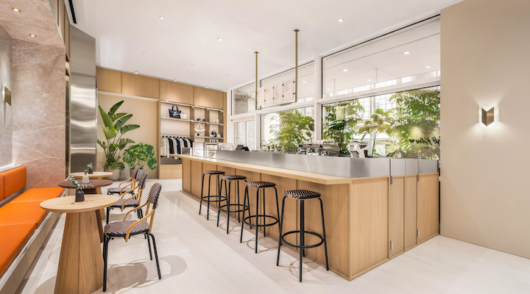Discount fashion brand Giordano has reported a 35 per cent slump in operating profit for the 2014 year on the back of falling sales globally.
Overall, sales fell five per cent, but in the key Chinese market they were down nine per cent and in other countries they fell by as much as 20 per cent. Operating profit before other income was down 35 per cent to HK$465 million, (US$60 million).
The Hong Kong based company reported total sales of HK$5,545 million in 2014, (US$715 million). Excluding the effects of translating sales made in foreign currencies into Hong Kong dollars, sales decreased by three per cent.
But the group said sales in the second half of the year were “relatively stronger” for mainland China and Taiwan with same store sales growing in the second half.
“South East Asia had a weak third quarter, but recovered in the fourth quarter. Hong Kong remains challenging and Middle East sales growth weakened after a strong first quarter.”
The China result was particularly telling given the total Chinese apparel market grew 11 per cent.
“With the growth of online sales in China and the proliferation of increasingly high levels of new retail space from large infrastructure projects, the competitive environment is extremely price competitive,” Giordano said in a statement.
“Sales over the [Lunar] New Year period in early 2014 were weak, but recovered in the last three quarters leading to a small growth in same store sales.”
Giordano knows it has work to do to restore sales growth and profitability. In its statement to the Hong Kong Stock Exchange it observed:
“Core to our success will be our ability to get the right products, at the right price, in the right quantities, in the right place, at the right time. We call this the five “Rs” and we are intensifying our efforts to train and develop our people in techniques and disciplines that will enhance this approach. This will be supplemented by an increase in global programs which will enhance cost efficiency and price competitiveness,” the company said.
“In order to further improve the quality of our merchandising efforts, we have introduced brand management processes to establish “matrix” style profit accountability and improve cooperation between brand and product development and the local market. We will continue to develop this approach to improve the responsiveness of our central product development teams to local market needs.”
Sales in Hong Kong decreased by six per cent, with comparative same store sales declining five per cent. “This reflects difficult trading conditions in Hong Kong in the year as the nature of visitors from mainland China changes. During the year, apparel market sales in Hong Kong grew at four per cent, compared to eight per cent in 2013.”
Sales in Taiwan declined by three per cent, but comparative store sales increased by one per cent. “Sales grew at mid-single digit levels in the last three quarters. This reflects the success of products which adapt to the local casual wear taste, supported by local marketing programs.”
Sales in other markets in Asia, notably in Singapore, Malaysia, Thailand and Indonesia, declined by seven per cent with a decline in comparable same store sales of six per cent.
Sales in Singapore declined by 13 per cent as a result of weak demand from tourist shops and “inappropriate merchandising decisions”.
“[Our] merchandise mix is now better managed and sales are improving, with the fourth quarter showing positive same store sales.”
Sales in Malaysia declined by five per cent due to weak consumer sentiment “as the government pursues tight fiscal policies (reducing state subsidies to basic commodities)”.
“We added stores in this market but weak same store sales are still a concern which will be met with improved merchandising.”
Sales in Indonesia sales were flat year on year despite adding new stores. “The devaluation of the Rupiah in 2013 has depressed demand growth and resulted in significant cost increases. A period of uncertainty around the presidential election also impacted consumer sentiment. Some recovery was seen in the fourth quarter. We added stores to increase our penetration of this market and are confident of the long term prospects of this market.”
Sales in Thailand declined by three per cent in the year.
“Sales were particularly depressed in the first half of the year (down nine per cent) due to socio-political instability in the country. The devaluation of the Thai Baht has also depressed sales demand and increased costs. Strong recovery was seen in the second half of the year. We added stores to increase our penetration of this market.”
In Australia, sales declined by 20 per cent and the company closed seven of its 32 stores there. It says same store sales in the second half returned to growth.
Sales for Middle East markets decreased by two per cent during the year and comparative same store sales by six per cent. “Merchandising is being improved to meet challenging market conditions.”
Sales in the UAE declined by two per cent during the year. “A significant growth in retail capacity and a change in the demographic of visitors to the country, have resulted in a highly competitive market which is depressing sales growth.”
In Saudi Arabia, sales declined by three per cent in the year. “Sales to pilgrims and tourists are depressed by construction work in Mecca and Medina and travel restrictions placed on visitors.”
Group gross profit decreased by HK$337 million (US$43.45 million), or nine per cent, to HK$3,214 million (US$414.4 million). Gross margin decreased by 2.7 percentage points to 58 per cent.








